Bay to Birdwood: Inside the South Australian love affair with historic cars
On the 40th anniversary of the first Bay to Birdwood, SAWeekend goes for a drive to discover the allure of an annual motoring pilgrimage about to set sail on a brave new era.
SA Weekend
Don't miss out on the headlines from SA Weekend. Followed categories will be added to My News.
- See every Bay to Birdwood car in our interactive guide
- Watch the livestream of the Bay to Birdwood from 8.30am Sunday
- More great features from SAWeekend
- The latest deals for Advertiser subscribers
It’s nearly peak-hour when we make the right hand turn on to Main South Road. Our 1934 Buick turns the head of more than one commuter as we slip comfortably into the traffic.
Paul Clisby is in the driver’s seat, and he handles the Buick’s two-tonne weight with aplomb. So he should. It’s no exaggeration to say he grew up in this car.
He was just a few months old when his father Arthur brought it home to Morphett Vale from a garage in Campbelltown back in 1968, and the Series 50, straight-eight cylinder beast now holds a lifetime of memories.
Paul and his sister Lisa spent nearly every childhood holiday in the spacious back seat of the Buick, travelling to vintage car rallies across South Australia and interstate with their parents Arthur and Nola.
They even drove the car to Queensland in 1976, part of a five-week convoy which also included a 1950s Lincoln and a 1936 Chevrolet. And they bundled into the Buick on Sunday, September 28, 1980, to join more than 600 other car-loving families for the inaugural Bay to Birdwood vintage car rally.
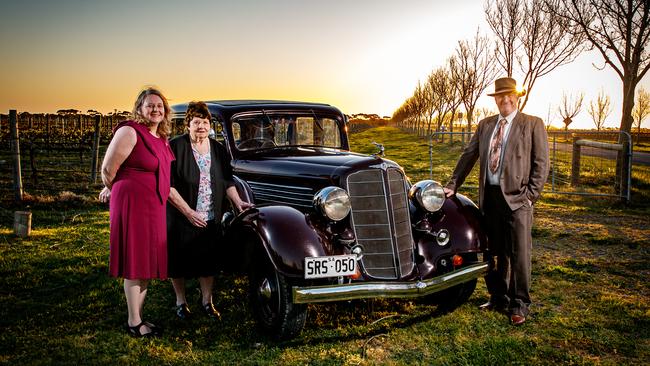
Arthur Clisby was president of the Historic Motor Vehicles Club at the time, and a prime mover behind an event which has become a beloved fixture on the South Australian calendar. A treasured photo in the family album shows Arthur standing on the back of a 1927 Buick buckboard delivering the welcome address to participants of the first event. Another shows the family dressed to the nines in period clothes after the event at the Birdwood motor museum.
The Bay to Birdwood celebrates its 40th year tomorrow and the Clisby Buick will, as always, be part of the procession from West Beach to the Adelaide Hills.
Paul Clisby is the first to admit that the Buick is unlikely to win any prizes as the flashiest or best-preserved car, but he’ll still drive her proudly in honour of his father who passed away in 2018.
Sister Lisa will drive the family’s other vintage car, a 1939 J model Vauxhall, and the duo is part of a generation gradually taking over from their parents in a beloved South Australian motoring institution.
The Buick’s last paint-job was in 1975, the lights are dim, the petrol gauge doesn’t work, the horn wouldn’t wake a sleeping baby, the windscreen wipers are virtually non-existent and the brakes … well, let’s just say slowing down requires a lot of forward planning.
But still the car epitomises the spirit of the Bay to Birdwood – creating precious memories and a chance to turn back the clock to a time when the journey, how you got there and who you got there with was just as important as the destination.
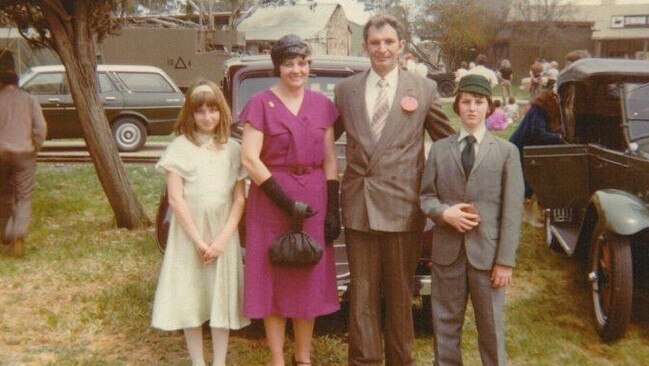
“She goes along all right,” Paul Clisby says as we merge into the traffic.
“We can potter along at 80 (kilometres an hour, but the speedo, of course, is in miles) if we really have to but I wouldn’t want to go much faster than that.
“It can be a bit hairy … she doesn’t stop very good with the brakes … And the steering … it’s a bit like driving a boat.
“But it’s big. It’s fairly impressive. And on the road going along, it looks good.”
Looking good is something nearly every vehicle entered in this year’s Bay to Birdwood does naturally. About 1250 vehicles will depart West Beach’s Barratt’s Reserve tomorrow morning, ranging from a 1904 De Dion-Bouton, an 04 Speedwell and a 1905 Clement-Bayard to more modern offerings such as a 1990 Mercedes Benz 560 SEC and a 1984 VH Commodore.
Each vehicle is the receptacle for a myriad of stories. And each holds a special place in the heart of the families who have looked after them over the decades. Because ask any owner of a vintage, veteran or classic car (there’s a legislated difference, but more on that later), and they’ll tell you the hobby is much more than tinkering with spark plugs, cleaning fuel lines, changing carburettors or polishing panels.
More importantly, it’s about family time, creating friendships and making memories which span generations.
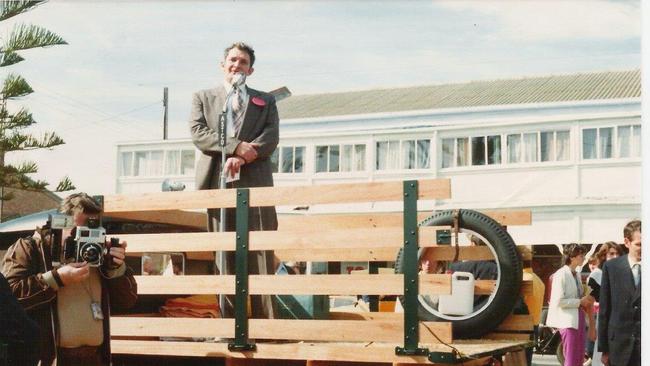
Michael Neale was just a young boy when the first Bay to Birdwood rolled through the northeastern suburbs in 1980, but he recalls standing on the side of North East Road and watching the procession in awe. “I remember thinking to myself, ‘Wow, what an amazing thing’ as all these old vehicles drove past,” Neale says. “I thought to myself back then that I would really love to be a participant one year.”
Fast-forward 40 years and Neale is now chairman of the Bay to Birdwood, an event run by the National Motor Museum, which is governed by the History Trust of SA. He’s also the proud custodian of a 1923 Willys Overland, which his family picked up about 30 years ago. The Neale family has long run Paradise Motors Mazda and the story goes that an elderly client, looking to downsize and modernise, traded the Willys for a Mazda 323.
Neale also owns a 1970 MGB (red, of course), which he loves. But it’s the Willys he holds most dear and he tells the story of teaching eldest daughter Victoria to drive the car when she was still a teenager.
Unsurprisingly, there are few similarities between driving the Willys and a modern car. Even the pedals are in different positions. In the Willys, the brake is on the far right and the accelerator sits between the brake and the clutch. When in control of the Willys, a driver also needs to double clutch – which involves depressing the accelerator to increase the engine revs between gear changes. And then there’s the matter of slowing down, which is done primarily by moving down through the gears and using the brakes only as a secondary deceleration device.
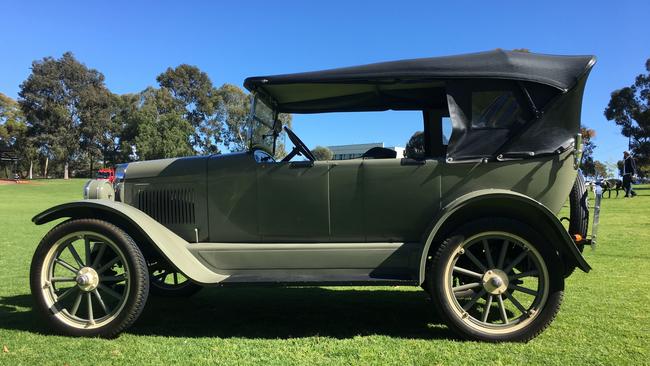
“So I had this great joy of sitting in this car with my daughter who had expressed an interest in learning how to drive this car, learning how to double the clutch, the very direct steering and how cautious you have to be with your braking distance,” Neale says.
“The Bay to Birdwood gave me an excuse to actually get my daughter interested in learning how to experience this vehicle.
“And now that knowledge is preserved for another generation … and it’s made her a far better driver as she understands what it’s like to drive a vehicle without all of the safety precautions that are afforded in a modern car.”
Neale makes the point that the Bay to Birdwood, and the entire vintage and classic car movements, are about more than just restoring, maintaining and admiring old cars. They’re about preserving the understanding of how to drive those cars, especially as modern cars become increasingly autonomous.
And they’re about creating unforgettable family memories. “It’s not really about the car or the motorcycle,” he says. “It’s about the people that vehicle connects and the stories that are drawn in and around and tied to that vehicle.
“That’s what makes the Bay to Birdwood just magnificent – when you’re wandering around looking at these vehicles or watching them drive down the road, and then you hear about the stories that are tied into them.
“And one of the great things about the Bay to Birdwood this year is that we are going to be able to tell our stories and show our vehicles to the widest audience we’ve ever had. And I think that’s really exciting.”
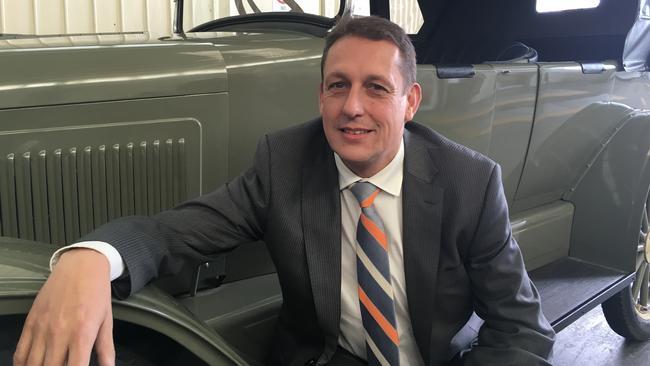
He’s talking about one of the COVID-enforced changes to this year’s event, where organisers are encouraging spectators to maintain social distancing by watching the cars on a historic live stream, including on advertiser.com.au, which will be able to be viewed, for the first time, from anywhere on the planet with internet coverage.
Traditionally, up to 90,000 spectators have lined the 72km route, which this year heads south from West Beach to Glenelg, follows Anzac Highway and Greenhill Road to Fullarton Road before eventually making its way along North East Road to Tea Tree Gully, Inglewood, Gumeracha and on to Birdwood.
Onlookers also love getting up close and personal with the cars and their owners at the start and end, but this year only rally participants will be allowed inside the start zone at Barratt Reserve, West Beach, and the finish area – at Birdwood’s National Motor Museum.
The pandemic also means nearly all interstate entries, which are traditionally mostly from Victoria, have had to withdraw – but nearly everyone who has pulled out has agreed to donate their modest entry fee, which ranges from $60 for motorbikes and $75 per car, to charity.
But this year’s changes aren’t all COVID-induced. To mark its 40th year, the 2020 Bay to Birdwood will combine veteran, vintage and classic cars in one convoy.
Specific definitions of these categories have varied over the years but the general rule of thumb is that veteran cars were produced before World War I, vintage cars between WWI and WWII and classic cars after WWII.
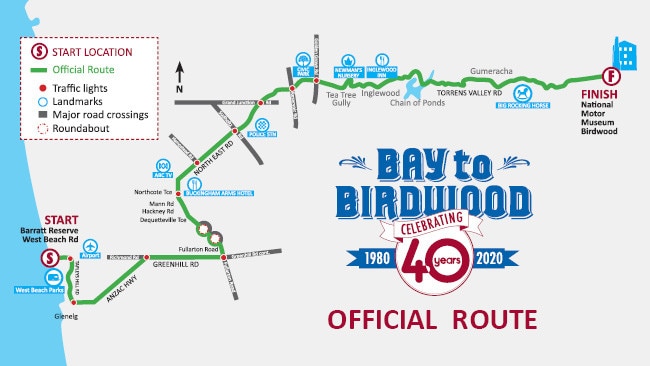
On inception, the biennial Bay to Birdwood Run was exclusively for the older vintage and veteran cars. In 1997, organisers introduced the first Bay to Birdwood Classic, for cars which didn’t qualify for vintage or veteran status, but were 30 or more years old. Since 97, the Run has occurred every even-numbered year, the Classic every odd-numbered year. This year, to celebrate its 40th birthday, the Bay to Birdwood will, for the first time, be a “whole of history” event combining both vintage and classic vehicles, and it’s an initiative which will become annual.
“Every year the Bay to Birdwood will be a celebration of all historic motoring,” National Motor Museum director Paul Rees says. Organisers will curate the entry list so that all decades of motoring will be represented.
The move is the next chapter in the continually evolving life of an event which is rivalled perhaps only by the City-Bay fun run and Adelaide Christmas pageant in its longevity and the special place it holds in the cultural fabric of South Australia.
Few South Australians are more proudly and prominently parochial than media personality Jane Reilly, who was working for SAS-10 in 1980, the television station which broadcast and helped organise the initial Bay to Birdwood. Reilly and her silent co-star Fat Cat rode a vintage fire truck from Glenelg to Birdwood for that first event, before providing entertainment and interviews at the finish line.
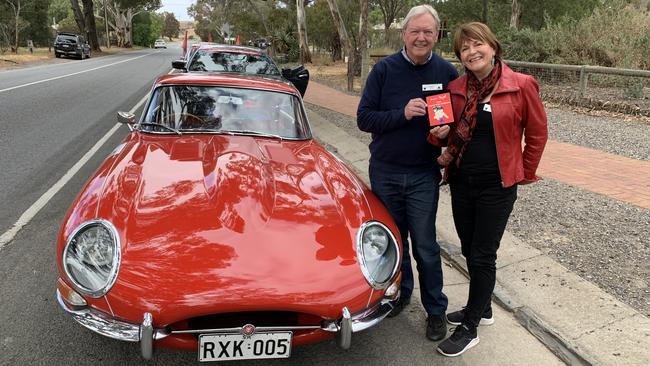
“I can still remember that smell you get from all the old cars,” she says. “There’s something about the leather and the metal and the chrome … and even the fuel smell is quite different from the modern cars.
“It had a real festive feel to it and there was a great sense of excitement that we were pulling this off. A lot of spectators came down and looked at the cars up close, and then they were all the way along Anzac Highway I felt like I was in the Christmas Pageant.”
Reilly has since been involved as a judge, as an MC and a participant, and will enter this year with her husband Randall Sach in his 1968 E Type Jaguar – red, again, of course. She speaks glowingly of the joy of driving the E Type through the Adelaide Hills, and not just on Bay to Birdwood days.
It’s a pastime with a rich tradition in South Australia, which Rees says has the highest percentage of historic vehicle ownership in the country.
Back in the Clisbys’ 1934 Buick, we have arrived at a McLaren Vale vineyard where Paul, Lisa and Nola have dressed in heritage outfits for our SAWeekend photo shoot.
Paul and Lisa have raided the cupboard to find the same suit and dress their dad and mum donned during the 1980 Bay to Birdwood. It’s only been a 20km ride today, and the Buick has handled it with ease. She’s not as spruced up as their other vintage car, the Vauxhall, purchased in the 1990s, to which Arthur devoted much more love and attention.
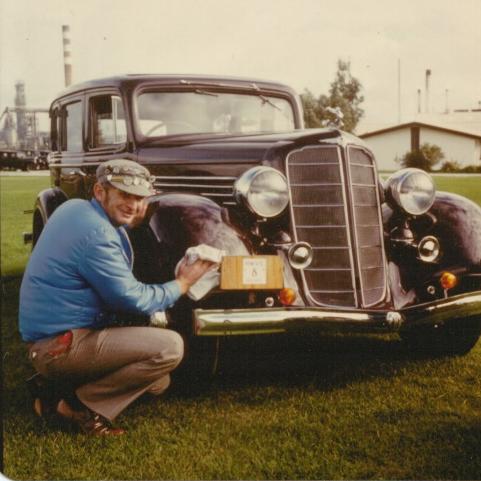
But she’s solid and (usually) reliable, and the source of a lifetime of treasured memories. Arthur was on the Bay to Birdwood committee for 29 years and a few months after he died in 2018, that year’s run was held in his honour. Two weeks ago, vintage enthusiasts dusted off their vehicles to attend the Federation of Historic Motoring Clubs SA’s second annual Arthur Clisby Memorial picnic day at Wirrina.
I make the mistake of asking Nola if she ever felt like a “vintage car widow” – the person left holding the babies while her husband dedicated all his time and effort into looking after the cars.
“Oh no, we’ve had some marvellous times and met lots of lovely people,” Nola says before Lisa takes up the narrative.
“Dad used to say that he chose to go with the old cars so that it could be something he did with the family,” she says. “We’ve got so many great memories.”

